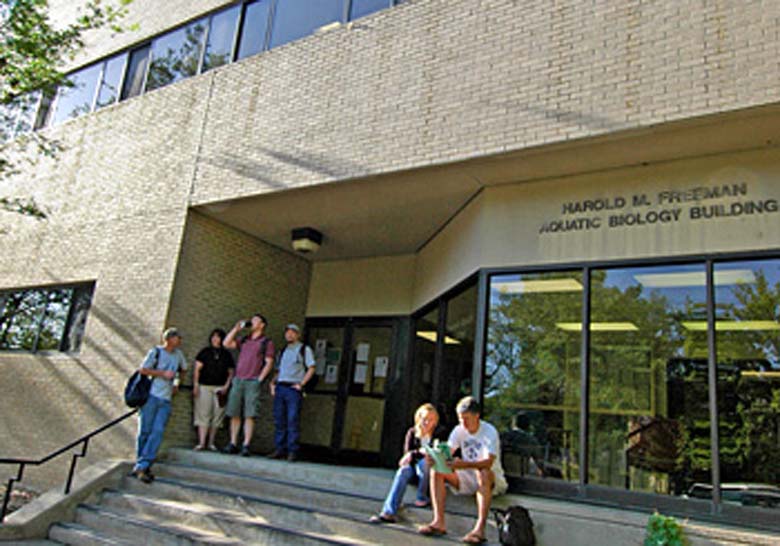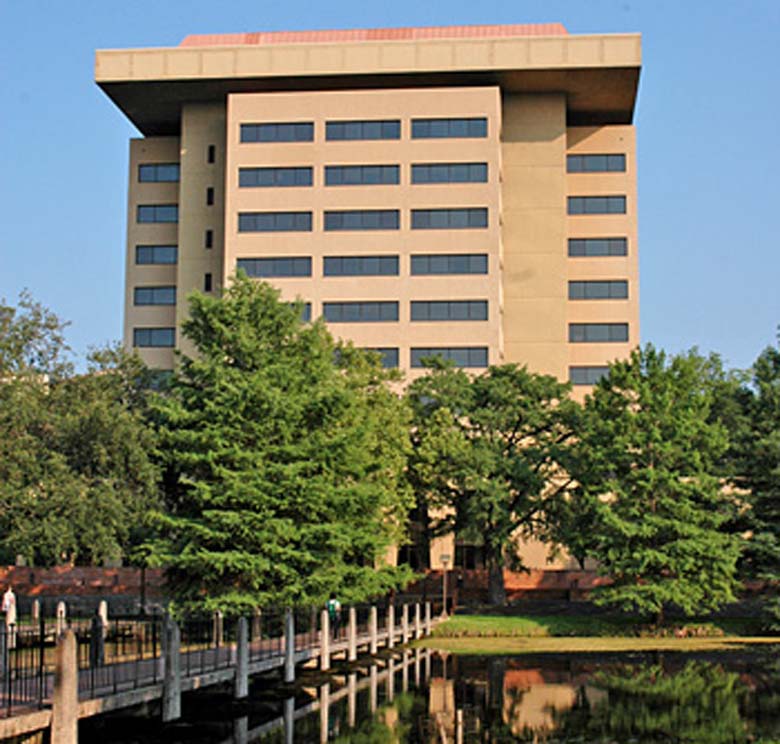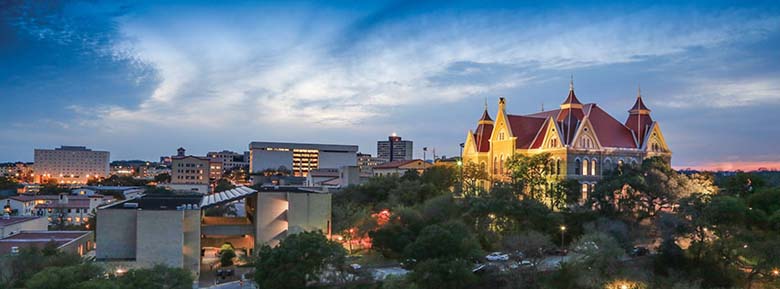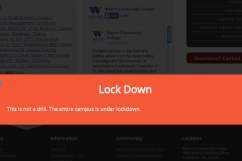
An aerial view of the Texas State University campus. (Wikipedia)
Police at Texas State University investigated reports of shots fired on the school’s campus in Austin. The situation was deemed to be a false alarm just after 10 a.m.
Here’s what we know so far:
1. Reports Said the Shooting Happened at the School’s Biology Building

The Freeman Aquatic Biology building was first opened in 1983. (TXState.edu)
KVUE reports that the shooting was reported to have happened the school’s JC Kellam and Freeman Aquatic Biology buildings.
2. The Area Was Closed Off to Students
Students are being told to avoid the area until further notice, according to the school’s Twitter account.
3. The School Got Reports About the Shooting From ‘Multiple Students’

The JC Kellam building was first opened in 1969. (TXState.edu)
There were no injuries. The “shooting” was first reported at 9:37 a.m. local time. A spokesman for the school, Jayme Blaschke, told the Austin Statesman, that officials received multiple reports about gunfire from students, he added “Hopefully it’s a false alarm.”
4. Around 35,000 Students Are Enrolled at the School

The historic Old Main building at Texas State University. (TXState.edu)
There are over 35,000 students enrolled at the school. According to the school’s Facebook page, there are 200 separate programs offered at the university. Until 2003, it was known as Southwest Texas State Normal School. TSU is “dedicated to excellence in serving the educational needs of the diverse population of Texas and the world beyond.”
5. Days Before the ‘Shooting,’ TSU Was Sending Out Acceptance Documents to People Who Hadn’t Been Accepted
Days before the reported shooting Texas State was in the news for accidentally sending out acceptance brochures to applicants, reports WHAS. Jayme Blaschke, told the station, that the materials were sent out in error by a third party employed by the school. He said “The brochure itself was not an acceptance letter. It is normally sent to students after they’ve been accepted.”

